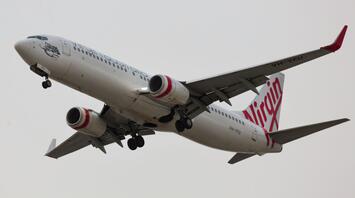What Happens When a Plane Collides with a Bird

Late Monday night, Virgin Australia flight VA 148 departed from Queenstown, New Zealand, heading to Melbourne. Shortly after takeoff, loud bangs and flames erupted from the right engine of the Boeing 737-800 jet. The pilot managed to safely land the plane with 73 passengers and crew at Invercargill Airport using the remaining engine.
Virgin Australia attributed the incident to a possible bird strike, though Queenstown Airport noted no birds were detected on the airfield at the time. Regardless, bird strikes are a significant risk for aircraft, capable of causing severe damage and even fatalities.
How Common Are Bird Strikes?
A bird strike occurs when an aircraft collides with a bird, though it can also include ground collisions with animals such as deer or dogs. The first recorded bird strike was by Orville Wright in 1905 in Ohio. Today, bird strikes happen daily, with seasonal peaks corresponding to bird migration patterns. Notably, in 2009, US Airways Flight 1549 struck a flock of Canadian geese, leading to an emergency landing in the Hudson River.
Between 2008 and 2017, the Australian Transport Safety Board recorded 16,626 bird strikes. In 2022, the Federal Aviation Administration in the United States reported 17,200 bird strikes.
Where Do Bird Strikes Happen, and What Are the Effects?
According to the International Civil Aviation Organization, 90% of bird strikes occur near airports, typically during takeoff, landing, or low-altitude flight where bird activity is highest. The impact of a bird strike varies by aircraft type. For instance, a bird strike can disable an engine, as seen with the Virgin Australia flight. The Boeing 737-800 can fly on a single engine to an alternate airport, but smaller, single-engine aircraft are more vulnerable, with bird strikes sometimes proving fatal. Since 1988, there have been 262 bird strike fatalities globally, with 250 aircraft destroyed.
How Do Manufacturers and Pilots Defend Against Bird Strikes?
Bird strikes are most frequent during early morning and sunset when birds are most active. Pilots receive training to remain vigilant during these periods. Radar technology can track bird flocks, though it is not universally available.
Boeing and Airbus, the two largest passenger jet manufacturers, use turbofan engines, which compress air using fan blades. A bird strike can severely damage these blades and cause engine failure. To ensure safety, engine manufacturers test by firing frozen chickens at high speed into operating engines.
The Australian Government’s Civil Aviation Safety Authority recommends various measures to manage wildlife hazards near airports. These include using small gas explosions to mimic shotgun sounds to scare birds away and planting non-attractive grasses and plants near runways.



















